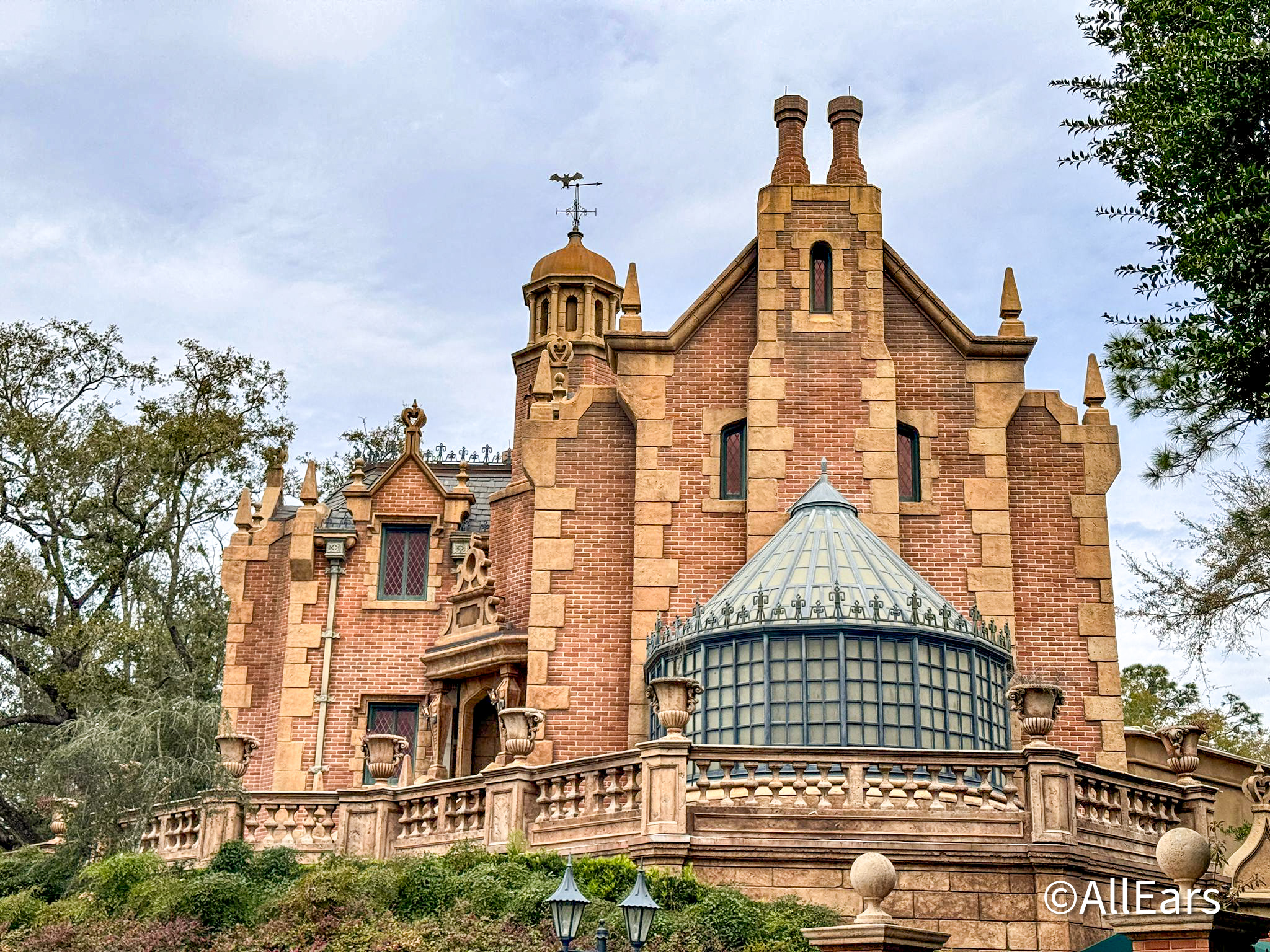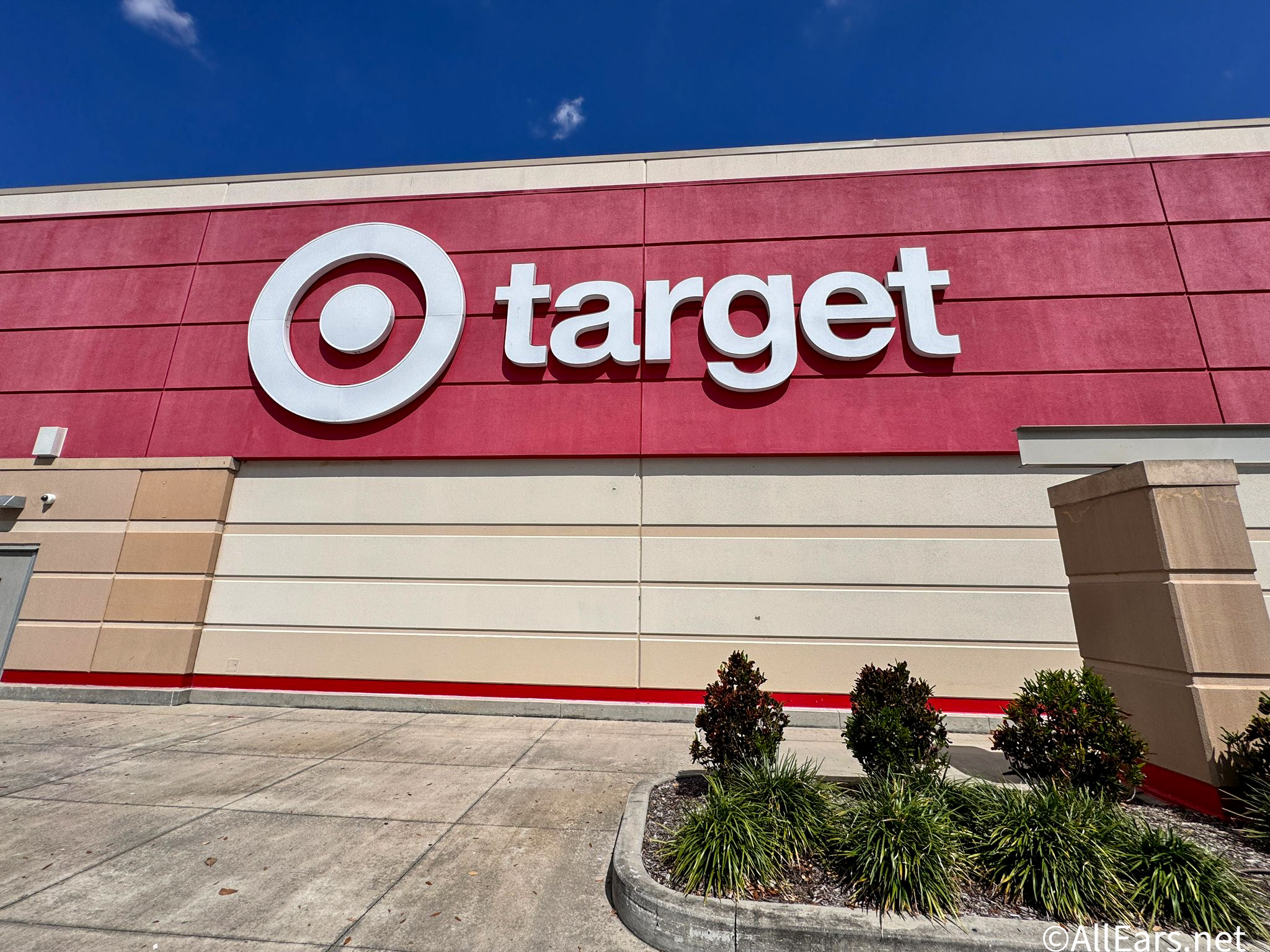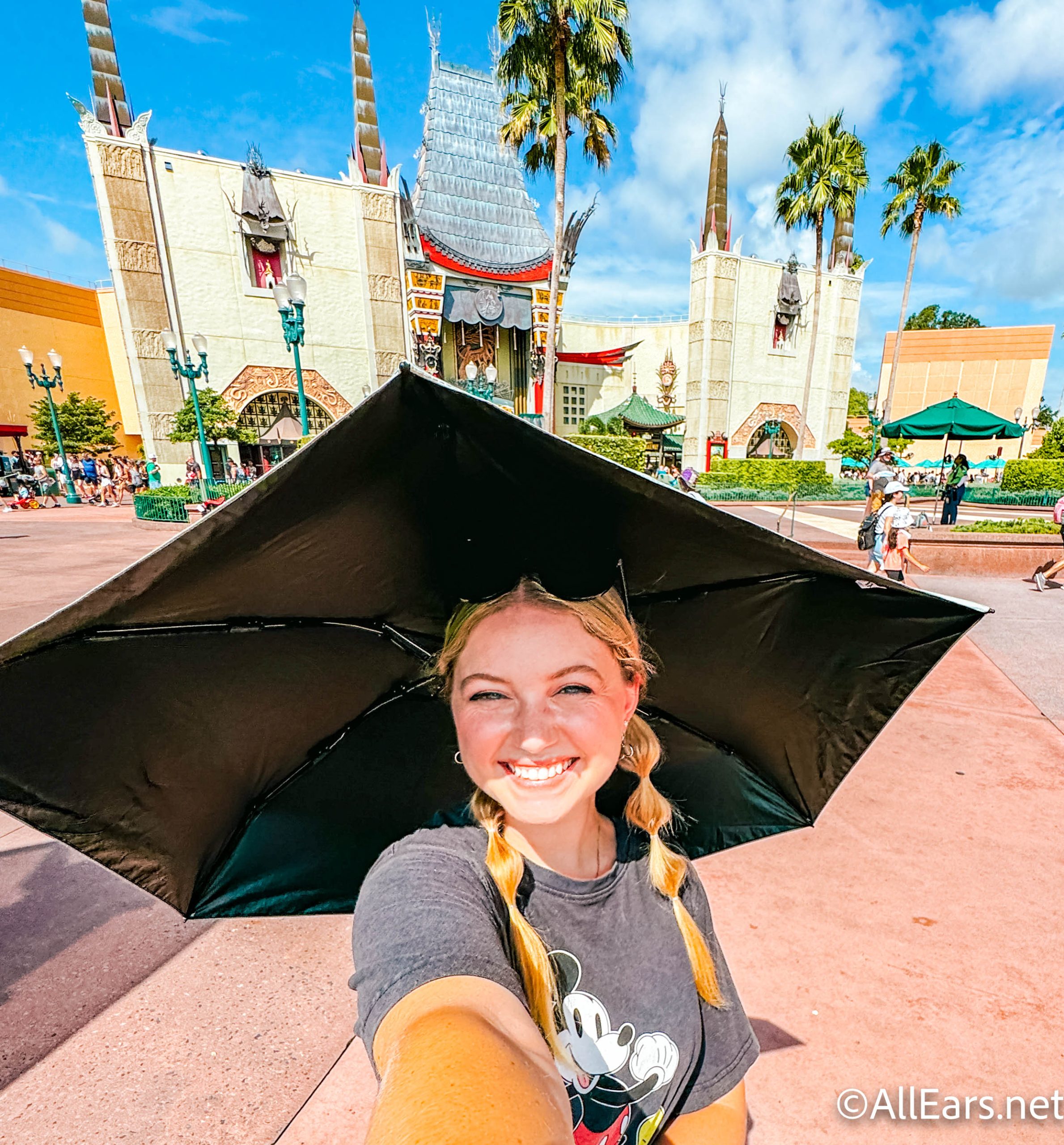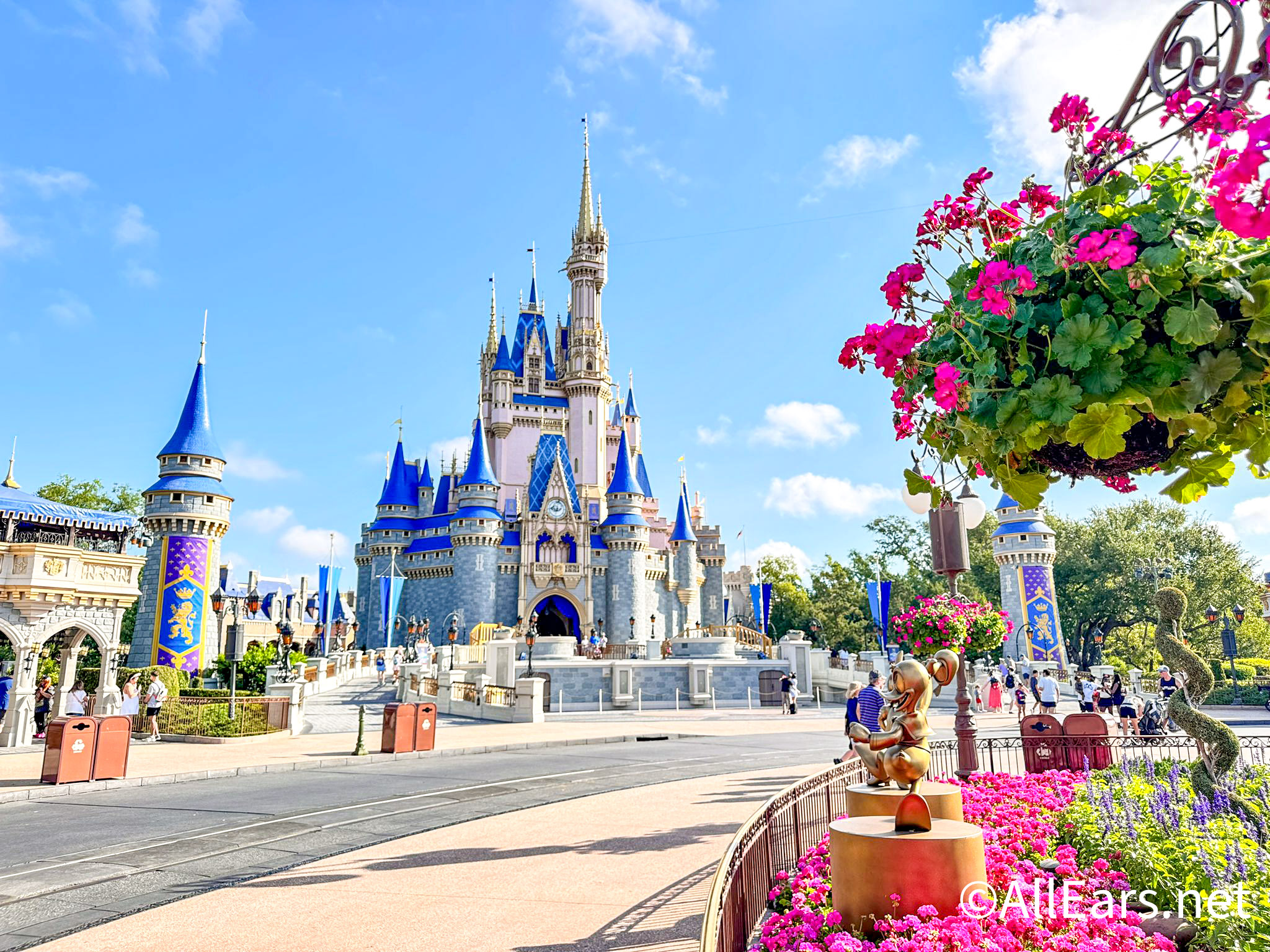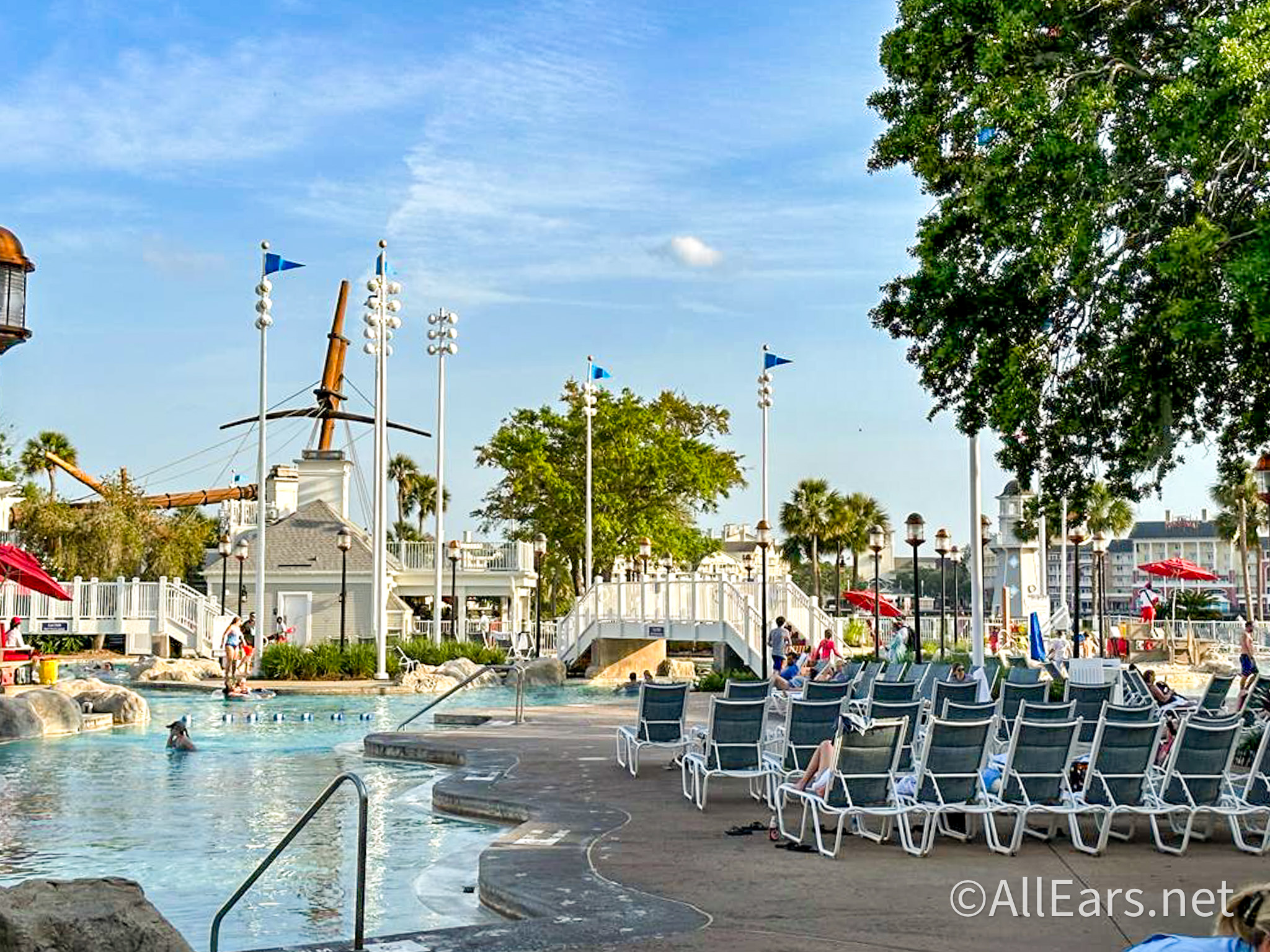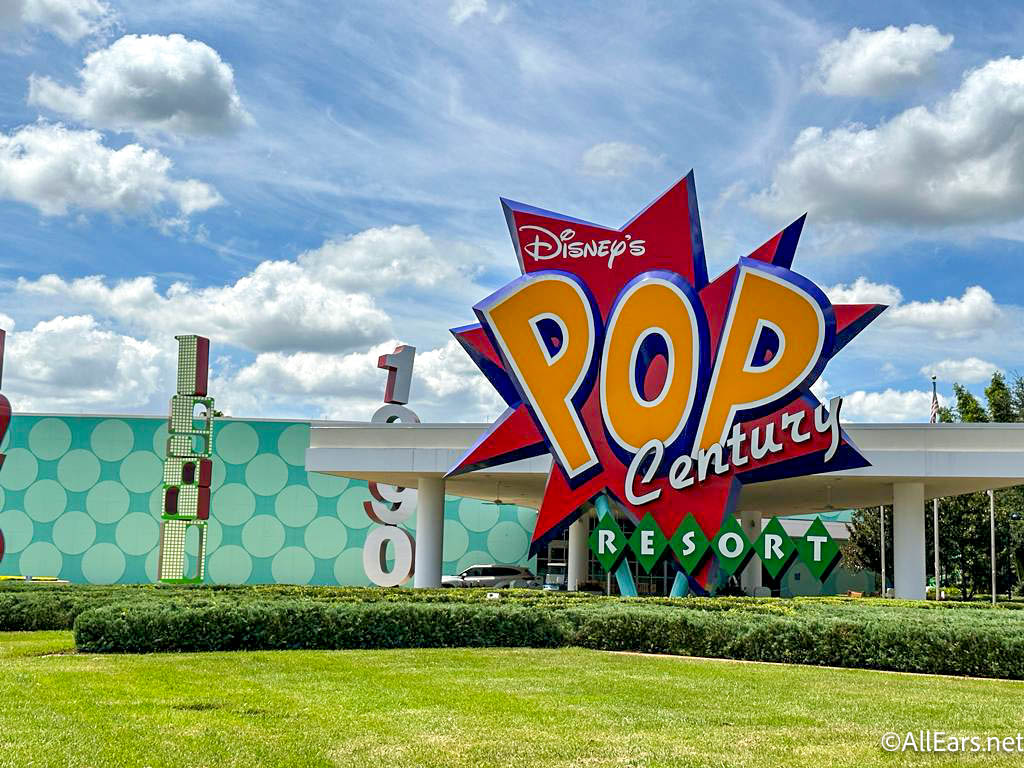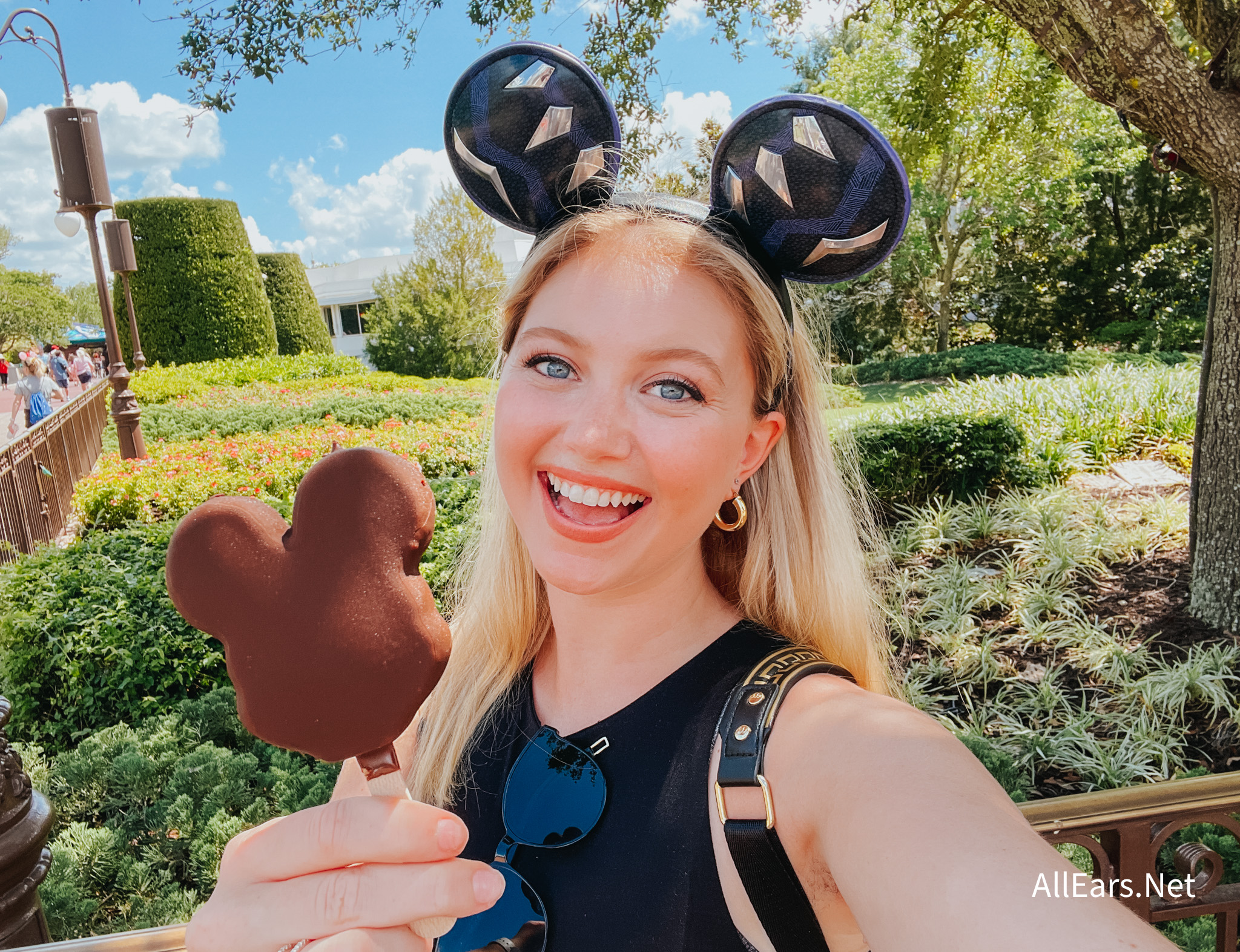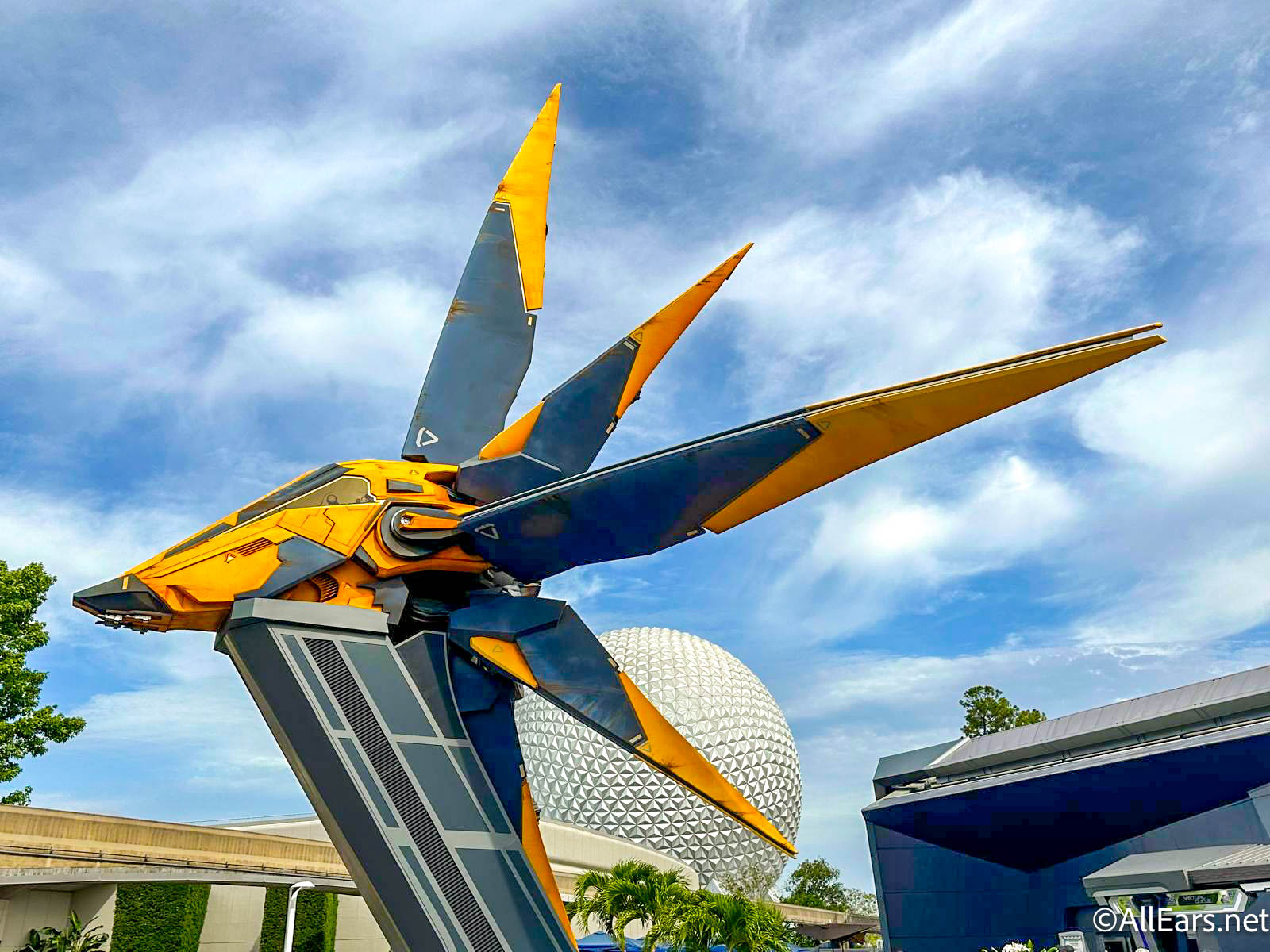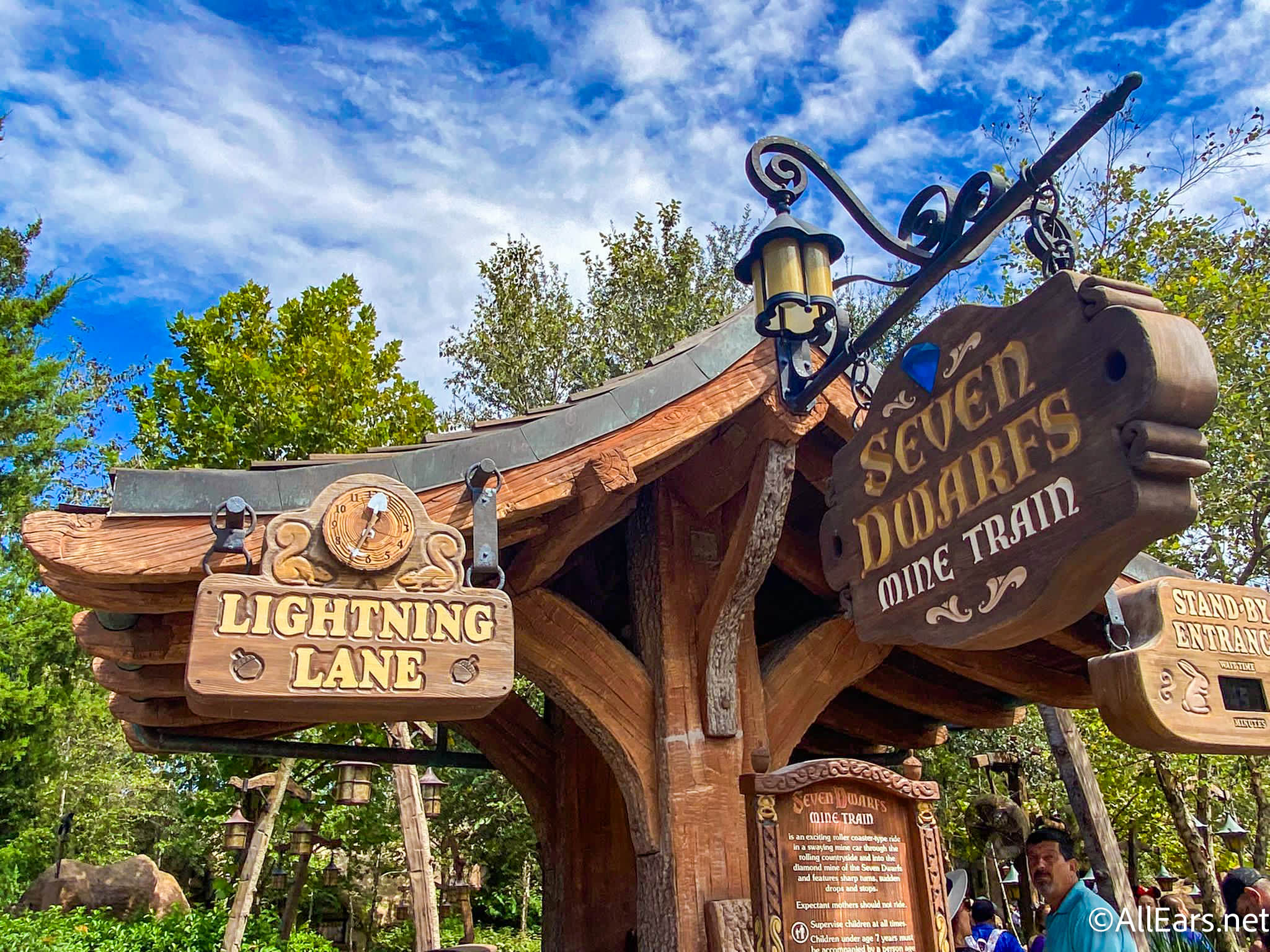WDW Chronicles: The Story of Coronado Springs Resort
by
Jim Korkis
Feature Article
This article appeared in the December 3, 2019 (#1054) edition of ALL EARS®
Editor’s Note: This story/information was accurate when it was published. Please be sure to confirm all current rates, information and other details before planning your trip.
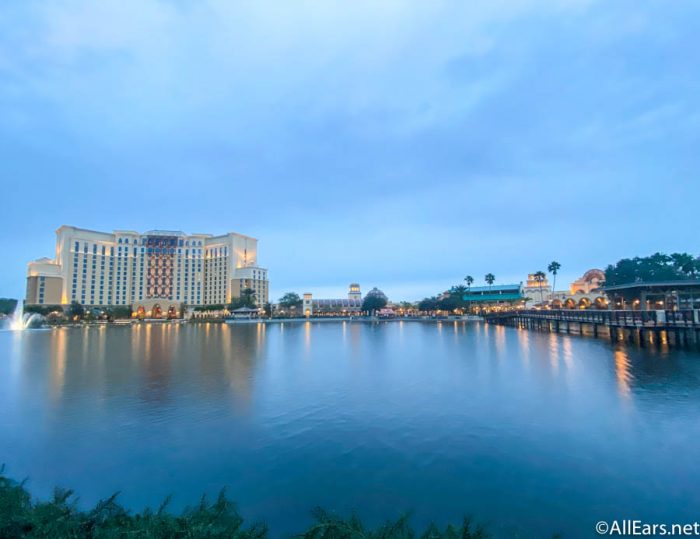
WDW Chronicles: The Story of Coronado Springs Resort
The Blizzard Beach water park was originally going to be connected to a Disney resort. Located where the Coronado Springs Resort site now stands, Disney’s Alpine Resort would have overlooked the melting snows of Blizzard Beach.
The Alpine Resort would have been a moderately priced hotel and as one of the perks for staying there, guests would have been able to ride a chair lift to the water park.
One of the reasons, the idea of a hotel connected to a water park was eventually rejected according to Imagineer Kathy Mangum was “the water parks need to be rehabbed just about every year, which means draining them and sandblasting the bottom. We didn’t want the guests overlooking an empty water park. It would ruin the story”.
Disney’s Coronado Springs Resort opened August 1, 1997 as a moderate priced resort but with convention facilities and other enhancements not typical for that level. However, by carefully doing things like having a lobby that employed millwork, vaulted ceilings, a mural and a fountain, the resort seemed more luxurious than it actually was.
It also included a fine dining restaurant (Maya Grill) that gave the impression of a more upscale resort.
Boll Holland who was Director of Design and Development for the resort stated at the time, “Some conventioneers see only business deals and don’t want too much of a ‘good time’ atmosphere. However, the WDW Resort market requires more amenities. It’s all very subjective and you must take into account the nature of convention business and meetings.”
So the convention area is more neutral in tone than the rest of the resort. “There was a struggle between Southwestern and Mexican styles,” explained Holland. “Southwest is more serious and acceptable for business while Mexico provides a fun and fanciful image.
“The architect, Graham Gund, is not a literal architect. His style is evocative and exterior details are never exactly the same as the historic precedent. He has a tendency to reconfigure historical architectural elements.”
However, since it was intended to be a moderate resort, budget factors to contain costs were important. Assistant project manager Bill Hanus stated, “Economic concessions were made for a design standpoint. For example, there are open air walkways as a motel would have versus corridors. We used real ceramic tile in high visibility areas, while in other less prominent areas we mixed the real thing with fake. That meant that for every 10,000 feet of tile, 5,000 might be ceramic but the remainder were faux finished.
“In the rooms, the headboards are painted for texture instead of using wood molding. It all adds up when each room’s savings is multiplied many times. The contractor purchased everything up front – door frames, hardware, roofing and then stockpiled the materials in site trailers which protected the project from price increases over a two year period.
“He also used ‘just in time’ delivery for all ‘pilferable materials’, a significant cost containment step.”
Looking for savings in low-maintenance, fan-coil air conditioning units resulted in the elimination of extra duct work systems, a more efficient unit with less maintenance for the operator and millions of dollars in savings for Disney. Lowering overall construction costs was a key factor in realizing the resort’s moderate price point.
Of course, Disney is a storytelling company so there is a back story for the resort. Francisco de Coronado left Mexico in 1540 and headed north in search of the fabled seven golden cities of Cibola. Imagineers used that actual story as a springboard for the back story that “Coronado Springs was founded by the descendants of a Spanish explorer named Juan Francisco. Searching for gold in 1569, Francisco stumbled upon the ruins of a forty-six foot tall Mayan pyramid.
“Hundreds of years later, relatives found his charts and decided to mount an expedition of their own. The rugged group liked the place so much that they built houses and put down roots.”
Wing Chao said, “We looked at a map to see where people go on vacation. After determining that they like to go to Mexico and the Southwestern U.S., we just blended the themes.”
The project was actually put on hold several times for a variety of reasons after it was first proposed in 1992. The original plans did not include a convention center but studies showed that Walt Disney World did not have enough convention space. However, those WDW resorts with that space had room rates too high for many associations’ budgets.
Finally, with the introduction of tunnel form cost-conscious construction with poured concrete bays, it became feasible in 1995 for an economic solution to provide convention space and moderately priced rooms. The Coronado ballroom is roughly 60,214-square-foot and is the largest ballroom in the southeastern United States.
The resort was designed to reflect three themes: Cabanas, Ranchos and Casitas. The two story Cabana buildings represent the coastal regions of the American Southwest and Gulf Coast villas. The Cabanas surround the rocky beach adjacent to the fifteen acre man-made lake, Lago Dorado.
The Mayan pyramid was to serve as a ceremonial center in the lake. According to the Imagineers: “The temple sits five stories above the Coronado Springs, and the water cascades down the temple’s steps into the Lost City of Cibola Feature Pool. Bas-relief sculptures, called stellae, have been carved on the pyramid.”
The architecture and landscape of the Ranchos suggest the more arid, country-ranch or farmhouse parts of the region with a small stream or arroyo tumbling over a rocky stream bed. Project coordinator Mark Kohl said, “We made sure the vegetation selected would really grow next to a river in the same region of Mexico.”
The Casitas were inspired by the urban areas of Mexico and the American Southwest. The Casitas are interspersed with colorful plazas and fountains and palm-shaded courtyards.
“We had to find a balance between Mexico and the Southwest when it came to selecting colors and how they relate,” said Kohl. “It was a two year research process where team members went to look and bring back photos, art and books for inspiration. I have a Mexican stone calendar on my wall. The art we finally selected for the guest rooms provides a better fit for the theme of that particular area.”
Palacios are decorated in shades of desert sand and sunset pink. The red tile roofs, mosaic accents, shady courtyards and sunny patios recall the grand haciendas of the Spanish Colonial era.
Project coordinator Cindy MacKenzie returned from a research trip to Oaxaca with three-foot tall frogs, lobsters and iguanas to take up residence in the 420 seat Pepper Market food court meant to suggest an old warehouse where individual food vendors have set up shop. The restaurant is divided into three areas: the fire temple near the exhibit cooking, the water temple and the sun temple.
This year in July, a new addition, the Gran Destino Tower opened along with renovations of existing rooms. The new tower adds 545 rooms to the resorts existing 1840 rooms and includes a unique two story lobby. All of the rooms throughout the resort were updated according to Disney to “celebrate the daring spirit of the great Spanish explorers, artists, writers and architects”.
The name of the tower was inspired by Destino (“Destiny”) that began in 1945 as a seven minute, experimental, animated short. It was a collaboration between Walt Disney and the famed surrealist painter Salvador Dali that was never completed during their lifetimes. It was the beginning of a long friendship between the two visionary artists.
Dali’s idea for the story was inspired by a melancholy love song entitled Destino that Disney had purchased but never used for the animated feature film The Three Caballeros (1944). Walt teamed the Spanish artist with John Hench to help guide him through the mechanics of animation for several months with Hench creating some artwork for the film as well.
The pre-production artwork of Dali and Hench was rediscovered by Roy E. Disney in 1999 when he was working on Fantasia 2000 (2000). He later championed the finishing and releasing of the film in 2003 that was shown at several international film exhibitions. Hench who was still working at the Disney Company at the age of 95 consulted on the work and Dali’s wife loaned her late husband’s notebooks on the film.
The Dahlia Lounge on the 16th floor of the Gran Destino Tower is inspired by Spanish surrealism and features a wall full of photos of Walt Disney with Salvador Dali from over the years.
The Dahlia Lounge is named after the heroine of the film, a young woman who struggles through the fluidity of time and unusual transformations to be united through destiny with her one true love. Dandelion imagery and metal bell accents (at one point in the film she becomes clothed in the bell’s shadow) all around the tower including a massive mural on the wall all draw inspiration from the film and its heroine.
Disney Imagineer David Stofcik said that the tower pays homage to the Spanish origins of the stories of Mexico and the American Southwest already told at the resort. He said that the resort’s fourteen acre lake, Lago Dorado, ties it all together and that the tower’s ribbon-patterned lines on its exterior (which are illuminated at night) represent water that flows through the building and into the lake.
Stofcik said some of the Spanish influences in the architecture were extended to provide opportunities to allow more light into spaces in the building, and that the decorative panels around the lobby itself were inspired by five specific Spanish tile designs from around Barcelona and Toledo that the Imagineers discovered during their research.
All the WDW resorts have histories and stories that are just as fascinating as the ones found in the parks.





